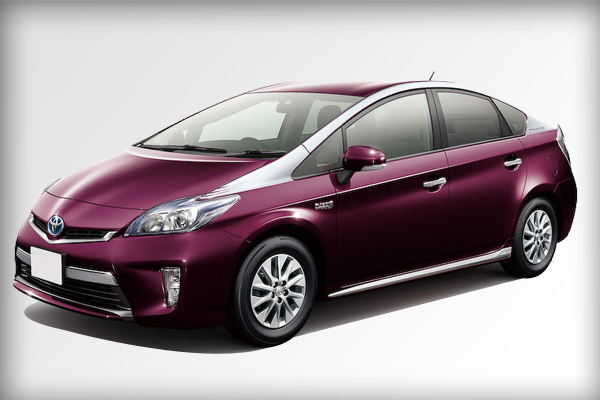Toyota Prius; first ever green car

Toyota Prius; first ever green car

The most recent model isn’t like the preceding model but it’s in fact an all-new car, with a more influential 1.8 litre engine, more powerful electric propulsion
• Powerful electric propulsion
• Lowest CO2 emissions for family car
• All new 1.8 Litre engine
Toyota started working on Prius in 1994 in order to develop the first Prius. The first Prius appeared in 1997 as an odd-looking machine with a 100bhp hybrid powertrain and a 1.5 Litre engine that emits 120g/km of CO2 emissions. It was available in Europe in 2000, but didn’t sell that well. The second generation Prius was introduced in 2003, and received very good response from customers. This was due to a touch of science fiction in its styling and enhanced power unit churning out 112bhp and had further greener characteristics with 104g/km of CO2 emissions. It proved itself a cash cow for Toyota.
The profile of the most recent model isn’t like the preceding model but it’s in fact an all-new car, with a more influential 1.8 litre engine, more powerful electric propulsion. The emissions of CO2 are down to just 89g/km. There’s an oomph flow graph showing the operations, in a side view with gyratory wheels, or there is an option for bar graphs presenting fuel utilization and energy regeneration process.
The Prius Plug-In delivers a parallel driving practice with additional 36kg of batteries to make it seem lethargic from a standstill and the car will of course run on electricity for longer than standard run. But the engine is incorporated to present more power just as impeccably and it can scuttle through more rapid traffic with ease. The asserted 0-62mph time is 11.4 seconds which is half a second slower than usual.
The Prius emits minimum greenhouse gasses than any same size family vehicle; it is an iconic green car. The Prius has only three trim levels with the same power sources. The real world practicality of the Prius has been presented in its new Plug-in version which offers more powerful Hybrid power train and extended overall range including greater EV range.
Categories
- 2013 Dubai Motor Show
- 2013 Frankfurt Motor Show
- 2013 Geneva Motor Show
- 2013 Shanghai Motor Show
- 2013 Tokyo Motor Show
- 2014 Detroit Auto Show
- 2014 Geneva Motor Show
- 2014 New York Motor Show
- 2014 North American International Auto Show
- Alfa Romeo
- Aston Martin
- Audi
- Audi A4 Check Engine Light
- Automotive News
- Avensis
- Beijing International Motor Show 2014
- BMW
- Cadillac
- Chevrolet
- Chicago Auto Show 2014
- Chrysler
- Citroen
- Daihatsu
- Detroit Motor Show 2013
- Diesel Engines
- Engines
- EV
- Fiat
- Ford
- General
- General Motors
- Geneva Motor Show 2014
- GM
- Guest Post
- Honda
- Hyundai
- Ideal Engines Reviews
- Infiniti
- Infographics
- Isuzu
- Jaguar
- KIA
- LA Motor Show 2013
- Lancia
- Land Rover
- LandRover
- Lexus
- Lotus
- Maserati
- Mazda
- McLaren
- Mercedes Benz
- Mini
- Mini Cooper S
- Mitsubishi
- New Technology
- Nissan
- Peugeot
- Porsche
- Range Rover
- Renault
- SEAT
- Skoda
- Smart
- Subaru
- Super Cars
- Suzuki
- Top Ten
- Toyota
- Transmissions and Gearboxes
- Uncategorized
- Vauxhall
- Volkswagen
- Volvo
- VW
